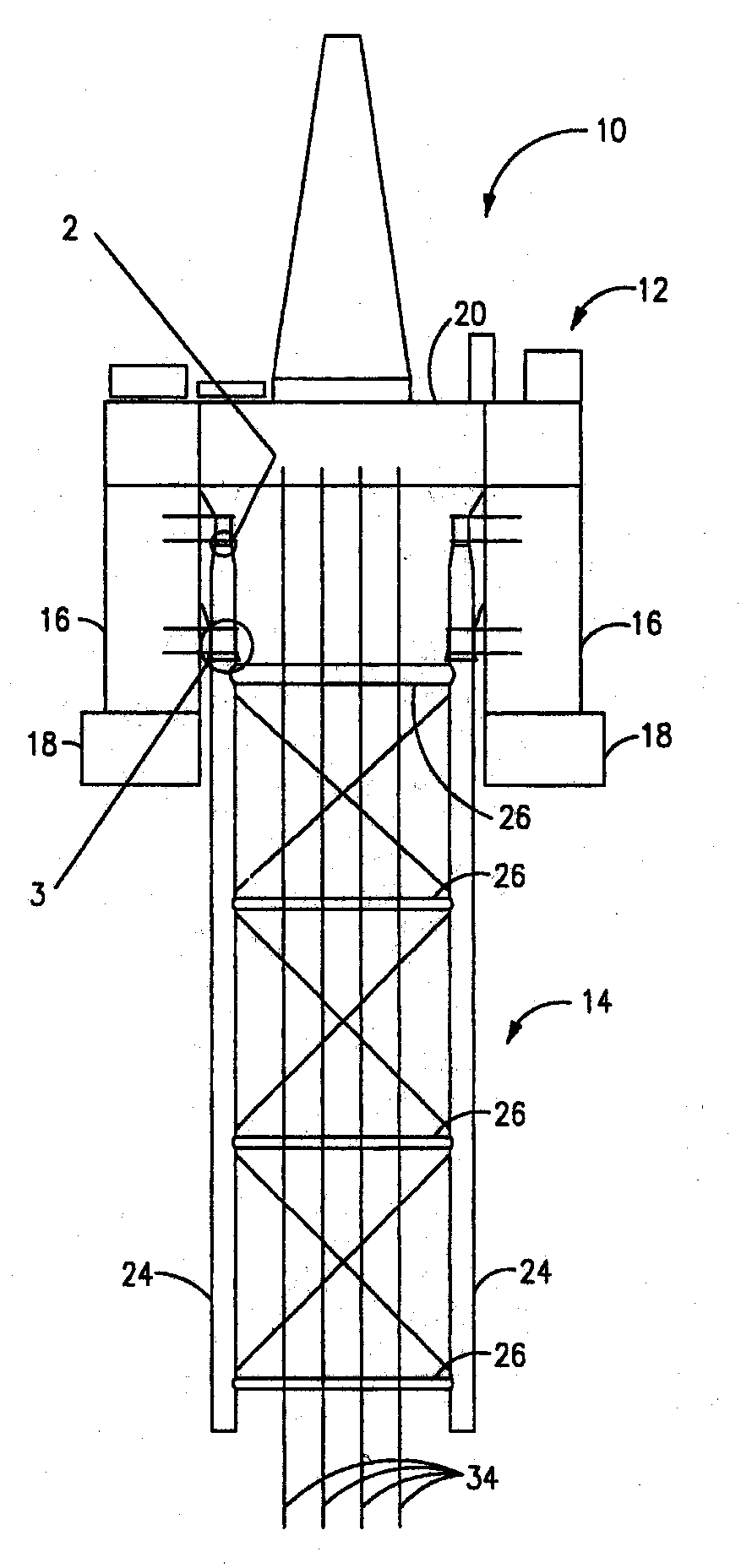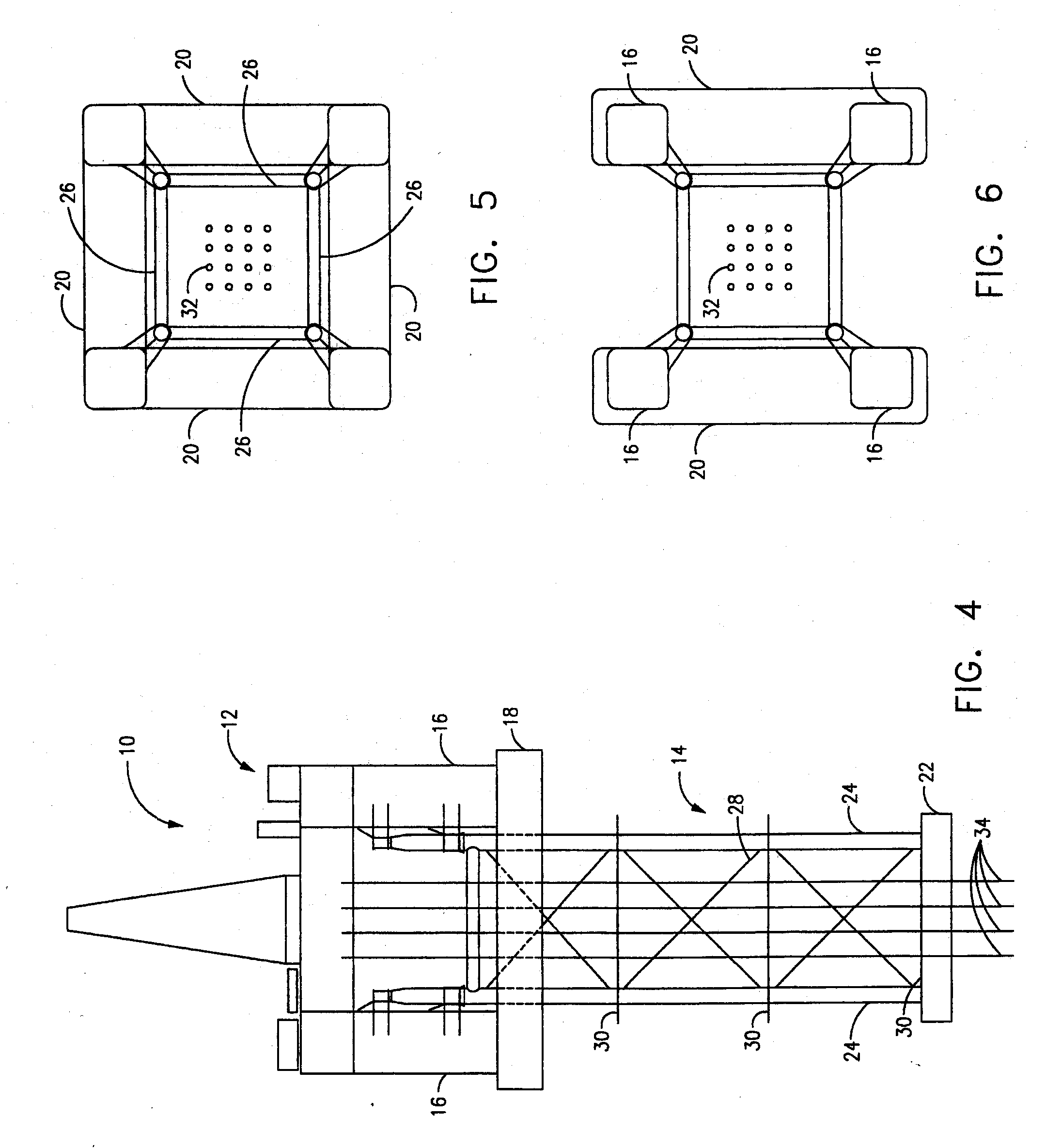Truss Semi-Submersible Offshore Floating Structure
a floating structure and semi-submerged technology, applied in the direction of vessel construction, special-purpose vessels, vessel movement reduction by foils, etc., can solve the problems of increased cost, increased fatigue in scrs, and inability to adapt to dry tree riser arrangement, etc., to eliminate deficiencies in the known art and reduce motion
- Summary
- Abstract
- Description
- Claims
- Application Information
AI Technical Summary
Benefits of technology
Problems solved by technology
Method used
Image
Examples
Embodiment Construction
[0021]The invention is generally indicated by numeral 10 in FIGS. 1 and 4. Semi-submersible floating offshore structure 10 is generally comprised of a buoyant hull 12 and a truss frame 14.
[0022]The hull 12 is comprised of four columns 16 that are supported on their lower ends by at least two pontoons 18. The topside structural framing 20 serves as horizontal bracing between the columns 16. The general construction, arrangement, and assembly of the pontoons, columns, and topside structural framing is generally known. Additional braces 42, seen in FIG. 7, may be provided on the hull 12 if desired. For ease of illustration, the braces 42 are only shown in FIG. 7.
[0023]Even though the conventional semi-submersible hull design can be used for the invention, the preferred design is to use pontoons that are larger and deeper and columns that are smaller in cross section. This preferred arrangement will provide better control of motions that have been a source of the above-referenced proble...
PUM
 Login to view more
Login to view more Abstract
Description
Claims
Application Information
 Login to view more
Login to view more - R&D Engineer
- R&D Manager
- IP Professional
- Industry Leading Data Capabilities
- Powerful AI technology
- Patent DNA Extraction
Browse by: Latest US Patents, China's latest patents, Technical Efficacy Thesaurus, Application Domain, Technology Topic.
© 2024 PatSnap. All rights reserved.Legal|Privacy policy|Modern Slavery Act Transparency Statement|Sitemap



